... read out a current data set?
To read out a current data set from a data base table, sort the table descending from the time stamp field ans transfer just one data set. The data base has to be polled in the necessary range with a time trigger. In this model the current data set is submitted with every call, read more in the Next Chapter.
Of course you can set up optional strain criterions, e. g. B. if the table has several lists of measurement readings.
Model 1: Time Stamp Sorting without Filter
Required fields/columns:
| <Time Stamp> | Time stamp from type date/time, from which is sorted |
| <Values> | Column(s) with relevant values |
Project a data base transfer object with the following properties:
| Data base access data | <Your data base access data from the plug in configuration> |
| Type | Select |
Tab: General
| Table | <Table which includes your data> |
| Available Columns/Used Columns | <All Value-Columns> |
Tab: Filter (Query, Update, Delete)
| Filter | No more filters in this model |
Tab: Query
| Sorting order | Descending (new value on top) |
| Sorting by column | <Time Stamp-Column> |
| Do not change records | Activate if the records are not to be changed |
| Mark transferred records | Activate if transferred datasets are to be used. In the column for marking the corresponding data records can be selected |
| Delete transferred records | Activate if transferred records should be deleted. |
| Abort transfer | on demand |
| Return read error | on demand |
| Limit number of records | 1 (just the first data set = the latest shall be transferred) |
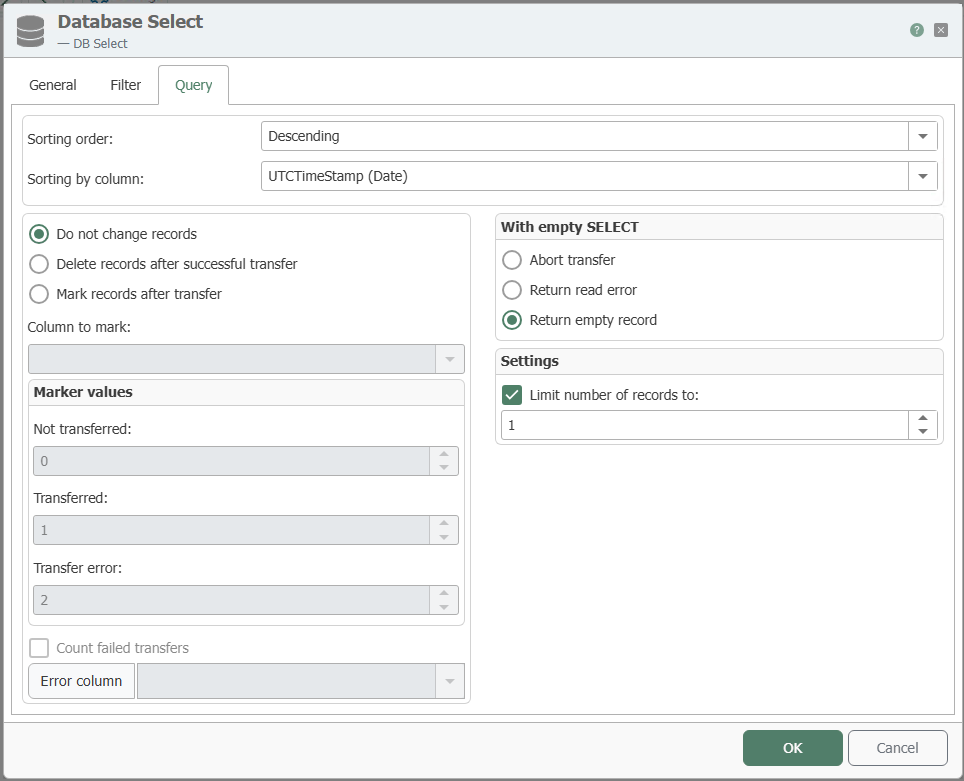
Database Select Transfer Object - Query
Your transfer object looks in the connection! like shown in the next image. In the example the column value was used as the value column. It can be used now as data source. The sorting can´t be seen in the connection projecting:
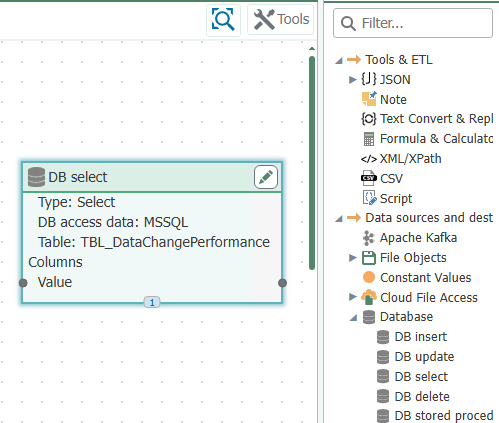
Transfer Object
Project another time trigger with the necessary range, e. g. 10 seconbds. Then every ten seconds the latest data set from the table is transferred, no matter if it was allready transferred before .
Model 2: Time Stamp Sorting with another filter
In this model the table has several test series, which are each defined with a ConfigID. There has to be projected another filter.
Required fields/columns:
| <Time Stamp> | Time stamp from type date/time, from which is sorted |
| ConfigID | ID of the test series |
| <Values> | Column(s) with relevant values |
Project a data base transfer object with the following properties:
| Data base access data | <Your data base access data from the plug in configuration; |
| Type | Select |
Tab: General
| Table | <Table, which contains your data; |
| Available Columns/Used Columns | <All Value-Columns> |
Tab: Filter
| Filter | “Add Filter” creates a new filter. |
| Filter/Filter group bearbeiten | Column: ConfigID Relational Operator: EQUAL |
| Preview | Here should be stated: WHERE (ConfigID = ?) |
Tab: Query
| Sorting by Columns | <Time Stamp Column> |
| Order of Sorting | Descending (new value on top) |
| Reducing the number of data sets to | 1 (just the first data set = the latest shall be transferred) |
| Error with empty select | on demand |
| Cancel transfer with empty select | on demand |

Database Select Transfer Object - Filter
Your transfer object looks like the one in the image. Remeber to fill in a value on the filter, e. g. with a constant object. The data base transfer object with the filter needs a two step transfer. The first step (blue arrow) defines the filter, the second (green) reads out the value. Because the data destination is variable, it´s not mentioned any further here.
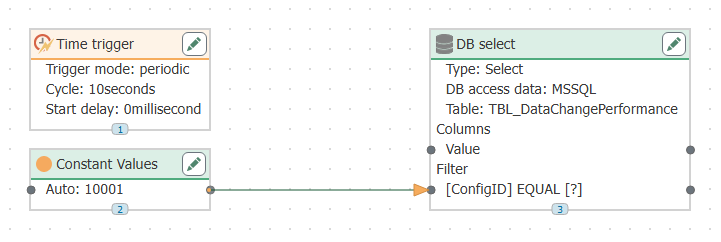
Transfer Objects
Project another time trigger with the necessary range, e. g. 10 seconds. Then every ten seconds the latest data set from the table will be transferred, no matter if it allready was transferred before or not.
Model 3: Time Stamp Sorting with anonther filter from a Template
Model 2 can be used as a projection over a connection template.
- Don´t project a connection, but a connection template with the same settings for the data base transfer object, as you did in model 2.
- In the constant object you don´t fill in the value, but a template variable [$ConfigID$].
- Project a time trigger, as you did in model 2.
- Create an instance from the template and fill in the value for the ConfigID.
This way you create quite simply connections for all existing test series (=ConfigIDs): One instance per ConfigID. Image above: Template; Image below Instance.
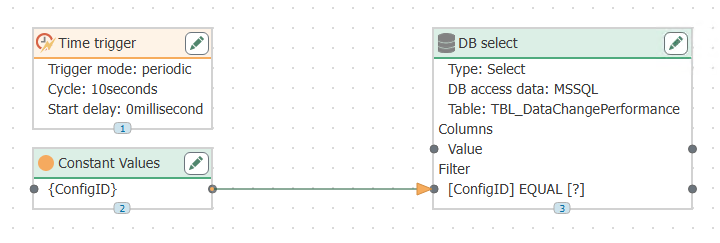
Transfer Objects - Template
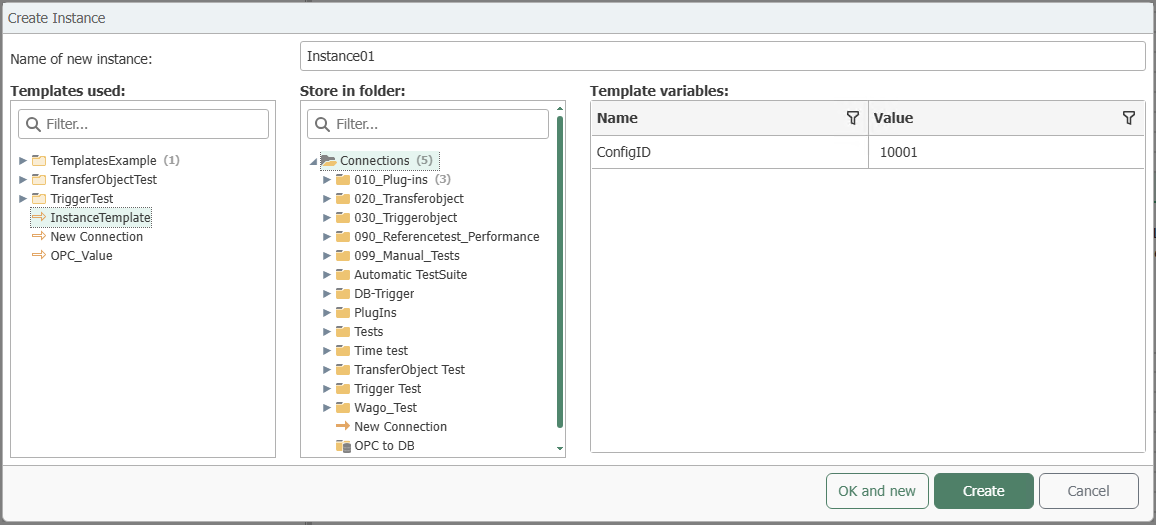
Create a instance